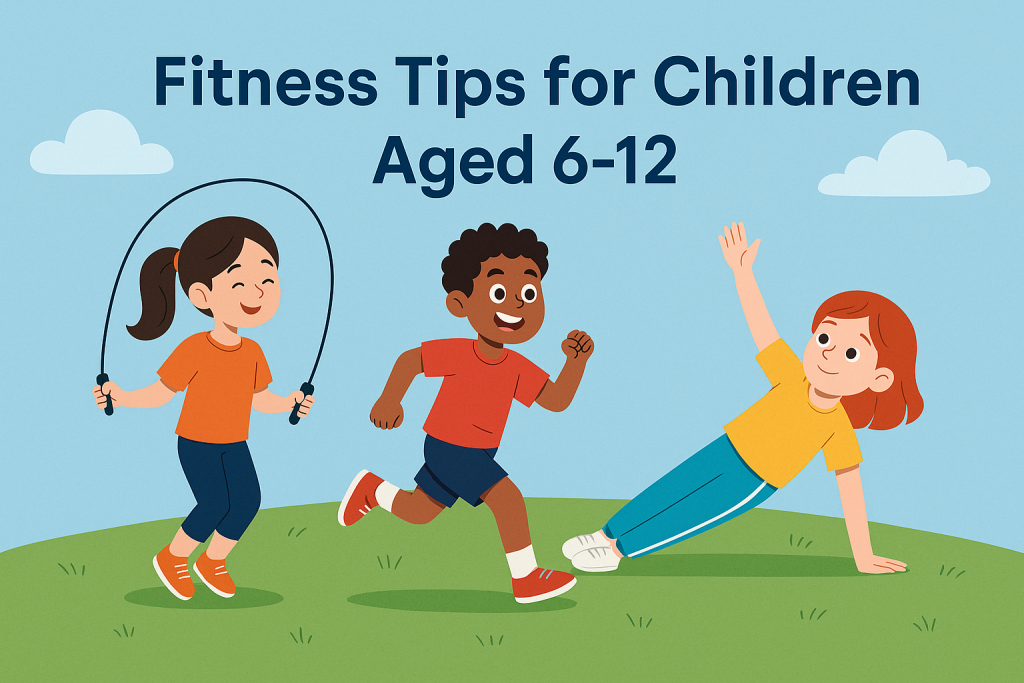Fitness Tips for Children Aged 6–12
Keeping children active between the ages of 6 to 12 is vital for their physical health, emotional wellbeing, and social development. At this age, kids are growing rapidly and developing critical motor skills, coordination, and endurance. Whether your child is sporty or just beginning their fitness journey, there are plenty of fun and simple ways to build a strong foundation for a healthy lifestyle.
1. Make Fitness Fun
Children thrive when physical activity is playful. Instead of structured gym routines, focus on making movement enjoyable:
- Dance Parties: Turn up the music and let your child groove freely.
- Obstacle Courses: Use cushions, boxes, and cones to create fun challenges.
- Outdoor Play: Encourage tag, hide-and-seek, or nature walks in the park.
Making fitness feel like play encourages consistency and helps build positive associations with movement.
2. Incorporate Age-Appropriate Activities
Children in this age range need a mix of aerobic, muscle-strengthening, and bone-strengthening activities. Here’s how to balance it:
- Aerobic: Biking, swimming, running games, and playing sports like football or basketball.
- Muscle Strengthening: Climbing frames, monkey bars, tug-of-war, and yoga.
- Bone Strengthening: Jumping rope, hopping, or gymnastics.
Aim for at least 60 minutes of moderate to vigorous activity daily, mixing these elements throughout the week.
3. Encourage Skill Development
Ages 6–12 are perfect for learning new skills that require coordination, focus, and teamwork. Consider:
- Martial arts (karate, judo)
- Swimming lessons
- Team sports (netball, rugby, cricket)
- Dance or gymnastics
Learning new skills not only improves physical ability but also boosts confidence, patience, and resilience.
4. Limit Screen Time
Too much sedentary screen time can hinder children’s fitness. Encourage tech breaks and replace some screen time with active alternatives:
- Walks after dinner
- Mini fitness challenges (e.g. “how many star jumps can you do in 60 seconds?”)
- Family active game nights using movement-based video games (e.g. Nintendo Switch Sports)
Set a healthy balance that includes at least one hour of physical activity each day.
5. Be a Fitness Role Model
Children mimic what they see. If you value fitness, your child is more likely to follow your lead. Try to:
- Join them for bike rides, hikes, or park games
- Share how staying active helps your own health and mood
- Participate in family fun runs or charity walks
Creating a shared commitment to movement strengthens both bodies and family bonds.
6. Prioritise Rest and Recovery
Fitness doesn’t mean constant movement. Proper rest is just as important:
- Ensure your child gets 9–12 hours of sleep per night, depending on their age.
- Allow rest days between intense activities.
- Teach them to listen to their body—if something hurts, it’s okay to take a break.
Good recovery habits help prevent burnout and injury.
7. Celebrate Small Wins
Progress may be slow or uneven at times. Encourage your child by:
- Celebrating new milestones (“You rode your bike for 10 minutes straight!”)
- Rewarding effort and commitment over outcomes
- Using progress charts or stickers for daily activity streaks
Positive reinforcement helps build long-term motivation and self-esteem.
Final Thoughts
Promoting fitness for children aged 6–12 doesn’t require fancy equipment or rigid routines. It’s about nurturing a lifelong love of movement through play, exploration, and encouragement. By incorporating age-appropriate activities, limiting sedentary time, and leading by example, you can empower your child to build healthy habits that last well into adulthood.
Related Reading: Fun Kids Indoor Games That will burn energy

